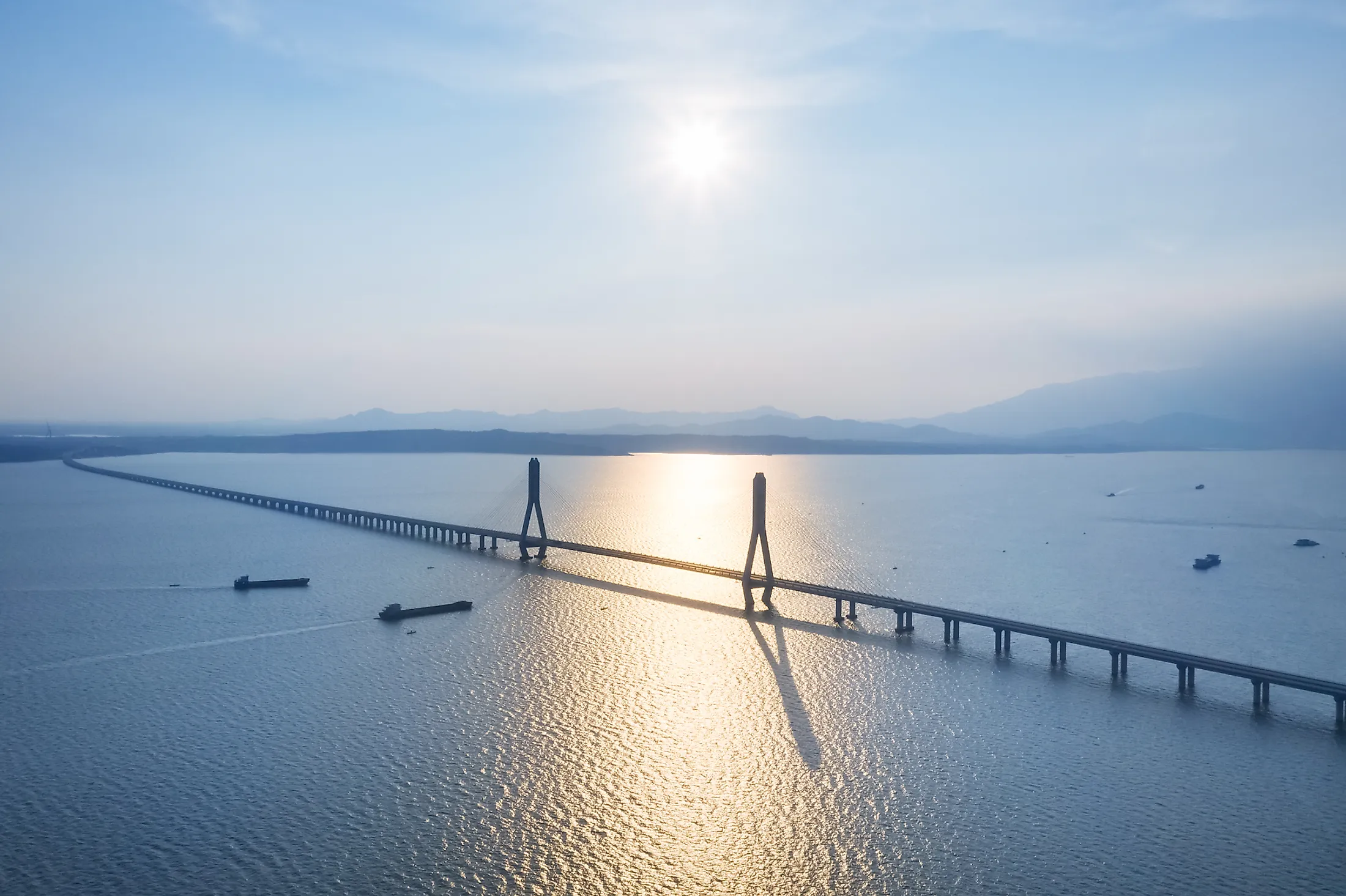
Poyang Lake
Also referred to as P’o-yang Hu, the Poyang Lake is the largest freshwater lake in the People’s Republic of China, located in the northern Jiangxi Province in the southeastern part of the country. The Poyang Lake is situated in a structural depression on the south bank of the middle reaches of the Yangtze River and is fed by five rivers that flow into the lake. Lake Poyang, in turn, merges with the Yangtze River through a short outlet channel at the northern edge of the Jiangxi Province. The Poyang Lake provides a vital habitat for many migratory birds and serves as a popular birdwatching destination for local and international tourists.
Origin Of The Poyang Lake
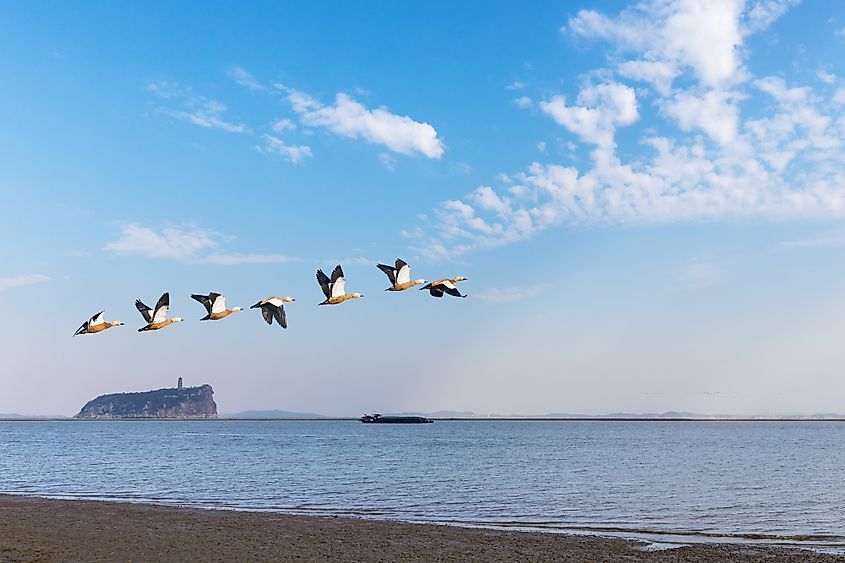
It is believed that the Poyang Lake basin was formed about 3 million years ago when the three large fault groups gave rise to a depression. During the last glaciation, the sea level was about 120m to 130m below the present sea level. Also, during this time, the bed of the Yangtze River was comparatively much steeper, and a 40m deep trough formed at Jiujiang, through which the current lake drained. During the interglacial period, when the sea level slowly rose to its present level, and the erosion of the Yangtze River bed stopped, the deposition of the lake began. The differences in the sea level between the Poyang Lake and the Yangtze River were reduced, and at the beginning of the 15th century, the Poyang Lake started to form gradually. By the 18th century, the Poyang Lake reached its current form.
Geography Of The Poyang Lake
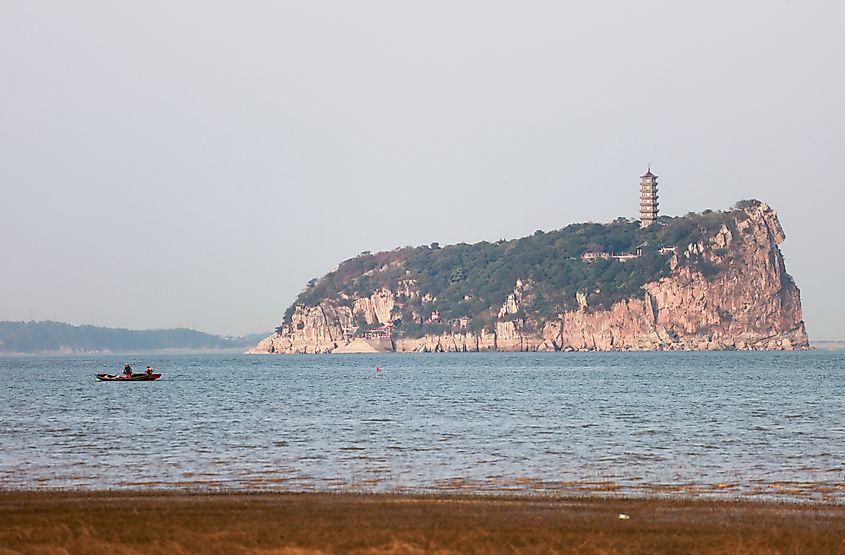
At its greatest extent, the Poyang Lake has a maximum length of 170km from north to south and a maximum width of 17km from east to west. The lake has an average depth of 8.4m and reaches a maximum depth of 25.1m. The Poyang Lake has a catchment area of 162,225 sq. km that accounts for about 97.2% of the total area of the Jiangxi Province. The Poyang Lake is fed by five rivers, including Gan Jiang, Xiu Shui, Xin Jiang, Fu He, and Rao He rivers. Located at an elevation of 16.5m, the Poyang Lake holds a maximum volume of 25.2 cubic kilometers. It serves as the principal flood outlet for the Yangtze River, which overflows during the summer months. The Poyang Lake dramatically varies between the dry and wet seasons. The inflow exceeds the outflow from February to June, and the outflow exceeds the inflow from July to January. The entire region becomes an extensive marsh cut across by seasonal water bodies and marked with small hills topped by villages in the winter season. In the summer season, the whole area is flooded, and then these tiny hills serve as islands. It has been recorded that the lake has an area of about 3,500 sq. km during the wet season and less than 1000 sq. km during the dry season. However, in recent times, due to several conditions like drought, sand quarrying, and storing water in the Three Gorges Dam, the area of the Poyang Lake has been reduced to about 200 sq. km.
The Poyang Lake experiences a subtropical wet monsoon climate, with warm, humid summers and cool, dry winters. Frosts often occur during the winter season. The average annual temperature varies from 16.7°C to 17.7°C. The region receives an average yearly rainfall of 1,700mm, mainly between April to September. Snowfall is quite rare, and winds blow from the north during winters and from the south during summers.
Ecology Of The Poyang Lake
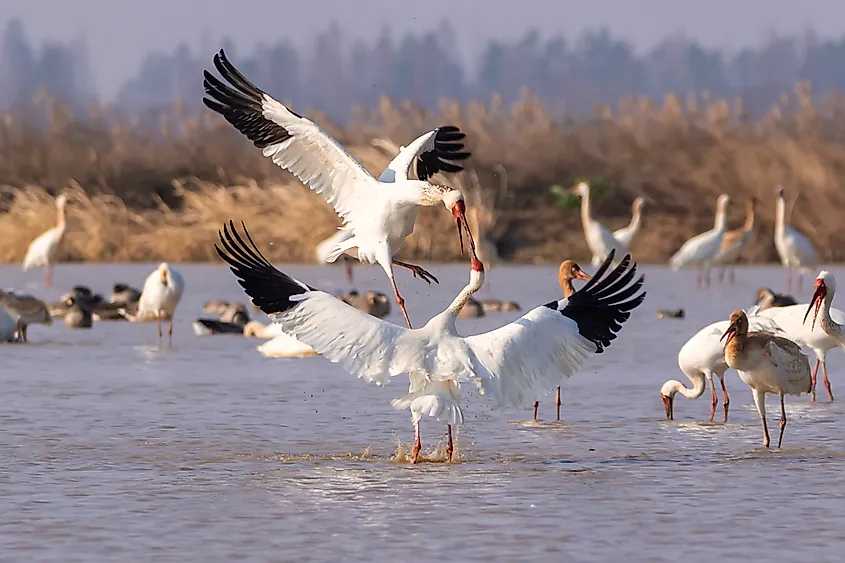
This unique lake-wetland ecosystem of Poyang Lake provides critical habitats for numerous migratory birds on the East Asian-Australasian Flyway. The lake also supports several species of plankton, mollusc, fish, birds, and mammals. The critically endangered Siberian cranes migrate every year from their breeding area in northeastern Russia’s Arctic tundra to China’s Poyang Lake. Other avian species found in the lake include the White-naped crane, Eastern white stork, Swan geese, Japanese marsh warblers, Tundra’s swan, Hooded crane, White-fronted goose, Great bustard, etc. The Poyang Lake is also home to some notable mammals like Chinese water deer and Black finless porpoise that is locally referred to as ‘jiangzhu.’ Covering an area of 224 sq. km, the Jiangxi Poyang Lake National Nature Reserve was established in June 1983 by the People’s Government of Jiangxi Province in the northwest corner of the Poyang Lake, where migratory birds flock in large numbers during the winter season.
Brief History Of The Poyang Lake
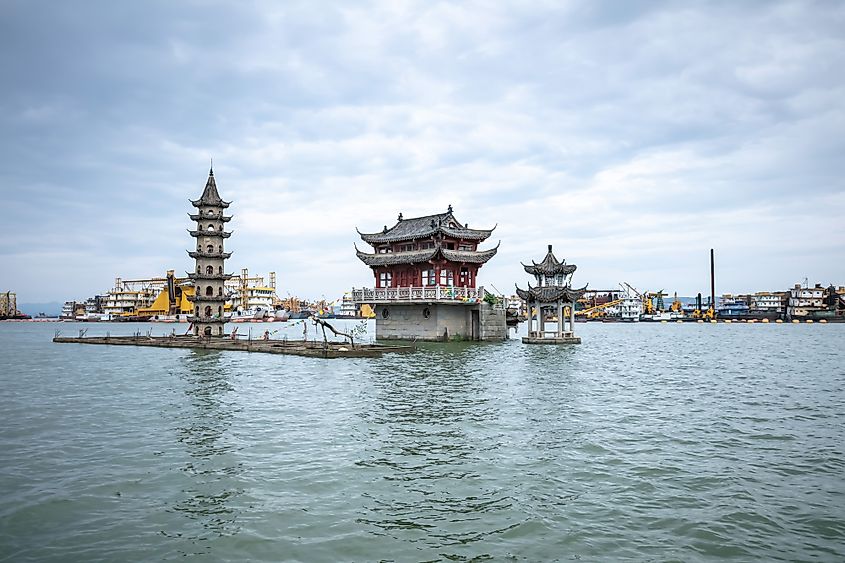
It is believed that before the Han Dynasty, the Yangtze River flowed in a more northerly direction through the Longgan Lake, while the Pengli Marsh made up the lower reaches of the Gan River. The present Poyang Lake area was actually a plain located along the Gan River. The Yangtze River then changed its course and started flowing in a more southerly direction around 400AD, which led to the backing up of the Gan River, in turn forming the Poyang Lake. During the Tang Dynasty, the Poyang Lake reached its greatest size, occupying a large area of about 6,000 sq. km. From August 30 to October 4, 1363, the Battle of Lake Poyang, considered one of the most significant naval battles in history, was fought in Lake Poyang. This decisive naval battle was fought after the fall of the Yuan Dynasty between the naval forces of Zhu Yuanzhang and Chen Youliang. On March 31, 1992, Poyang Lake was designated a Ramsar Wetland emphasizing the ecological importance of the lake and the associated wetland. In the later years, the Poyang Lake has significantly suffered due to landscape changes, anthropogenic influences on the inflow and outflow of water into the lake, construction of dams, and sand mining activities.











